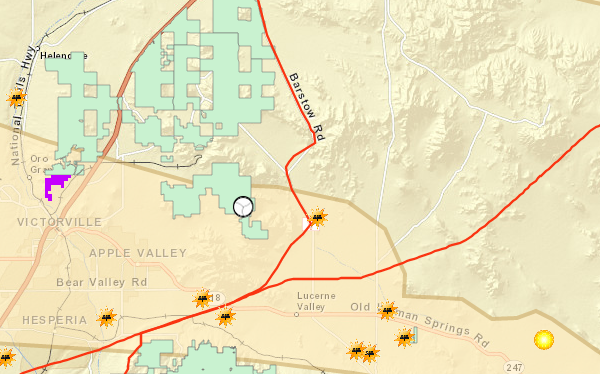Now You Can Find Energy Projects Proposed For Your Neighborhood

Here's an interesting new tool for Californians who want to learn if any power plants, transmission lines, and pipelines are planned for their favorite places, thanks to researchers at Claremont Graduate University.
This interactive map charts out everything from existing oil wells in the San Joaquin Valley to proposed transmission lines in the desert, and it's been compiled as a way to give Californians a handle on what kind of projects might be coming to their neighborhoods.
The Energy Maps project's intent is to give Californians a "heads up" about pending energy projects in their neighborhoods, which can help neighbors wield better input into energy decision making that can affect their lives, their property values, and their health.
"The construction of natural gas wells or power lines can be very disruptive to communities," said CGU professor Hal T. Nelson, who spearheaded the map project. "In the past, we've seen citizens go to court to block projects after construction was already underway. That's inefficient and expensive, and we think a publicly available map of proposed projects has the potential to lead to better outcomes and less litigation."
The map offers nine switchable layers allowing site visitors to display data ranging from proposed and existing electrical substations to rail and pipeline projects intended for moving crude oil. More than 5,800 proposed and recently permitted oil and gas wells dominate the maps, along with 215 solar power plants, 28 new transmission lines, California Energy Commission solar energy study areas, and wind project testing areas on BLM lands.
ReWire notes that some of the data in the maps is a bit dated, as for instance the proposed Soda Mountain Solar project being listed under its older name Caithness Soda Mountains. Also on the list are BrightSource Energy's Sonoran West and Siberia projects, which are indeed technically still pending but which are unlikely in the extreme to ever be built.
That's in no way a flaw in the project's execution, but rather just an example of the kind of fine tuning that's inevitably necessary in an ambitious project that relies on information from agencies that are often slow to update their own databases.
What's more, the Energy Maps site includes a means by which visitors can help crowdsource corrections, whether that's pointing out a need to update a name on a particular project (which ReWire just did with Soda Mountains Solar to test the functionality) or to alert the map curators of projects not yet included in the database.
All in all, the Energy Maps site offers an incredibly useful tool for Californians wanting to learn more about the state's growing energy infrastructure. Kudos to its creators.


